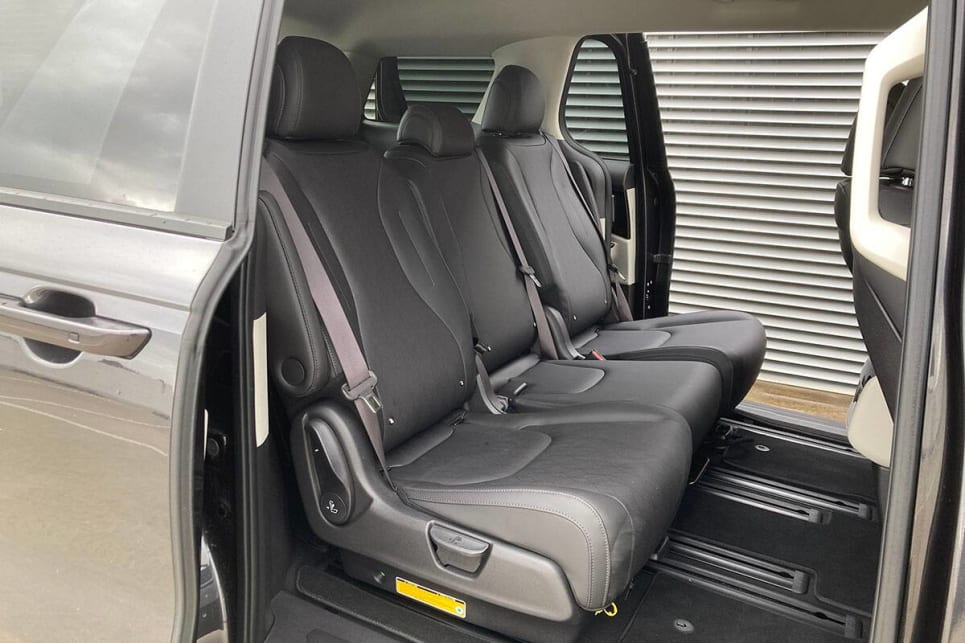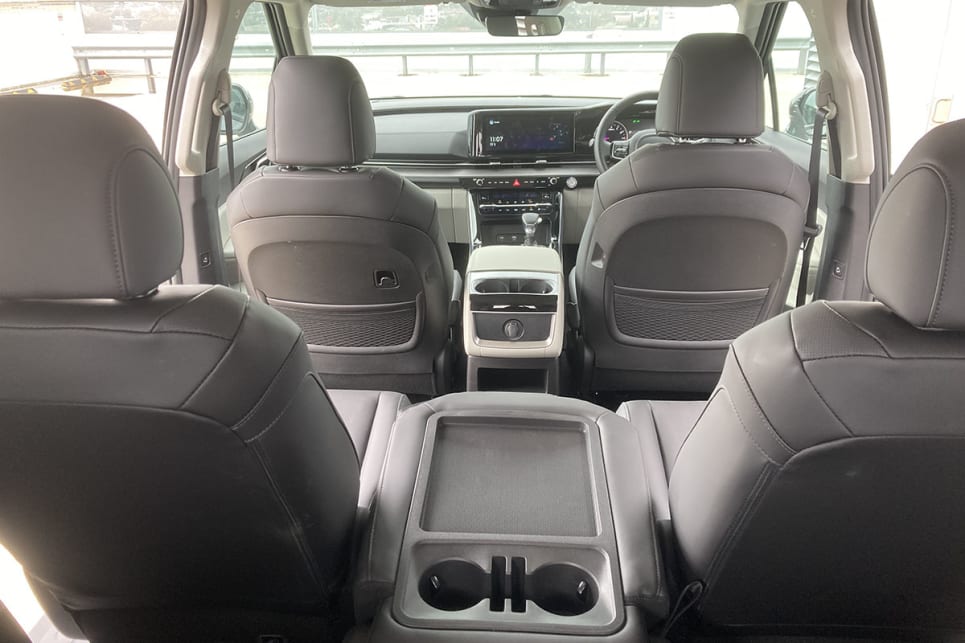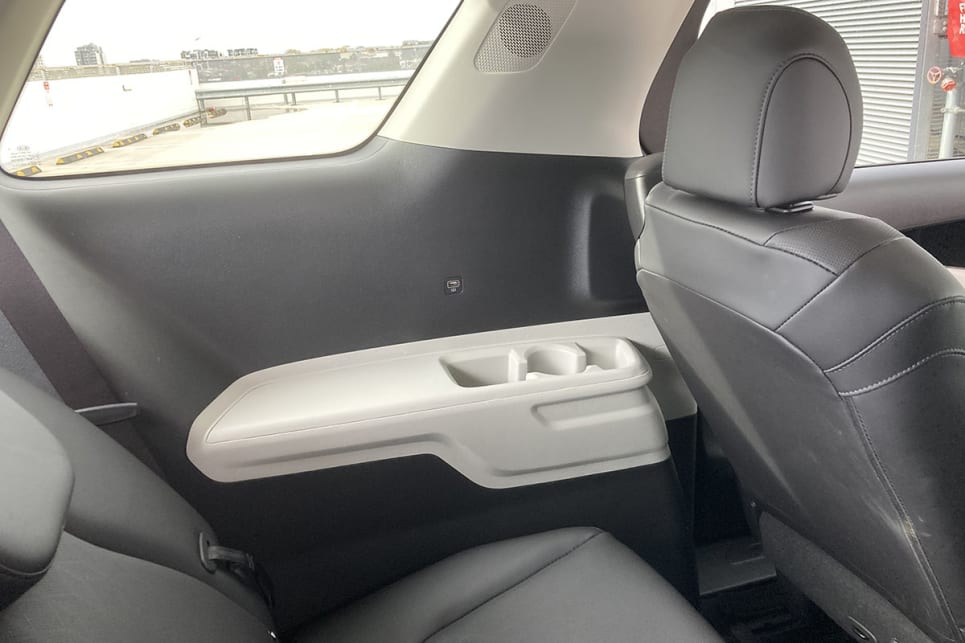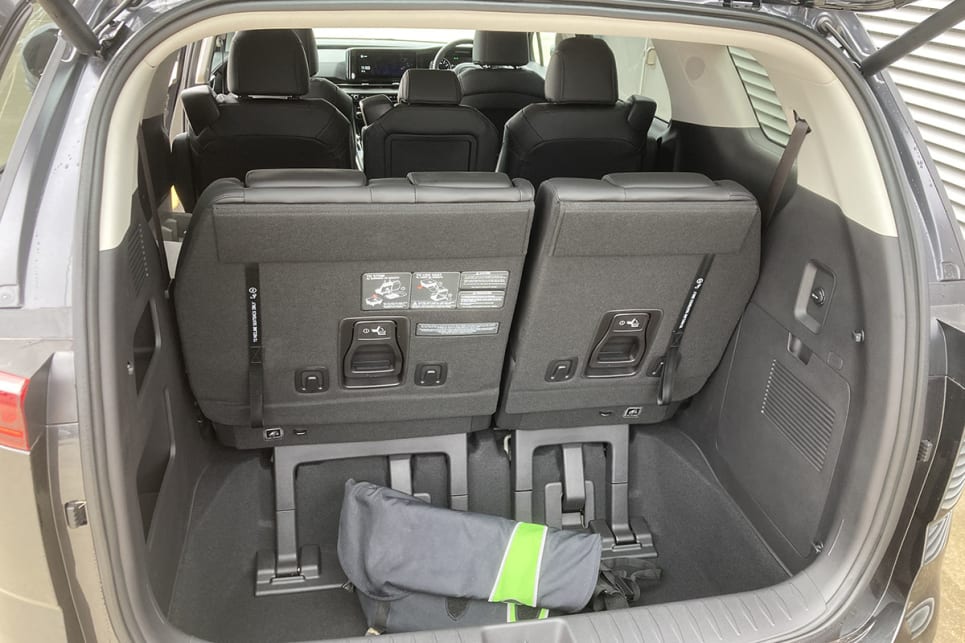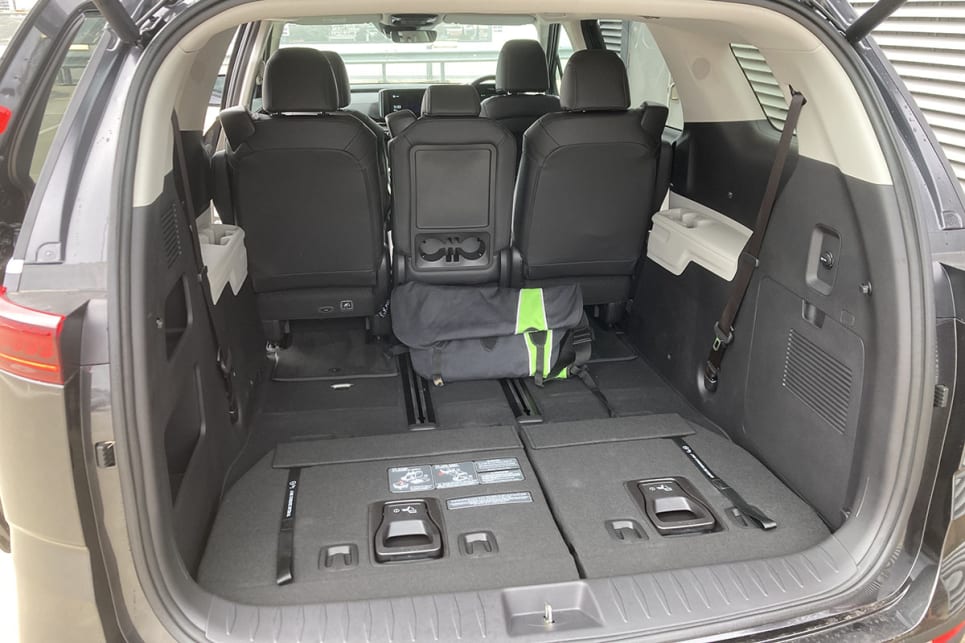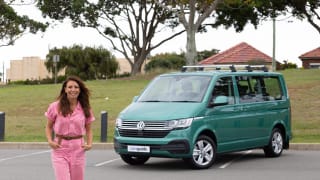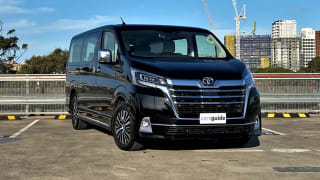Fitted with eight seats, the Carnival comes in eight flavours – base S from $46,880, Si from $52,380, SLi from $56,880 and Platinum from $64,680, and all before on-road costs. Engine choices are a 3.5-litre petrol V6 or – for $2000 more – a 2.2-litre four-cylinder turbo-diesel. Both drive the front wheels via an eight-speed auto.
Compared to the previous model, the new KA4 diesels jump by some $3200 and petrols $3700, though with the fresh design comes improved power, economy and standard equipment.
Ours is the penultimate, $56,880 SLi V6, and bare like Old Mother Hubbard it is not. You’ll find on/off LED headlights, 18-inch alloy wheels, heated and powered folding mirrors, roof rails, keyless entry/start, three-zone climate control, a 12.3-inch touchscreen multimedia system, dual Bluetooth connectivity, satellite navigation with live traffic, digital radio, an eight-speaker sound system, power-sliding rear doors, rear privacy glass, a powered tailgate, an electric driver’s seat, synthetic leather trim and an auto-dimming rearview mirror.

While all Carnivals include key safety items such as autonomous emergency braking (AEB) with pedestrian and cyclist detection, intersection assist, lane-keep and steering assist, active blind-spot monitoring, rear cross-traffic alert, adaptive cruise control, speed sign recognition, driver attention alert, high-beam assist, Safe Exit Warning (great for not dooring cyclists), a reversing camera and rear parking sensors, the SLi steps up with active rear cross-traffic collision assist (it applies the brakes!), Safe Exit Assist (doors momentarily won’t open) and surround-view cameras. Nice.
Peace of mind is helped by Kia’s seven-year/unlimited-kilometre warranty, seven years of free roadside assistance (if serviced by Kia) and published capped-price servicing.
For people seeking opulence, the statement-making Platinum ushers in matte-chrome exterior trim, black 19-inch alloys, puddle lights, a sunroof, an upgraded 12-speaker Bose audio, a wireless smartphone charger, a heated steering wheel with paddle-shifters, ventilated front seats, heated rear seats, powered front seats with driver’s side memory, centre and rear side-window sunshades, ambient lighting and Rear Occupant Alert (so nobody gets left behind inside). That's a lot of lush luxury for an extra $7800.

But while Apple CarPlay and Android Auto connectivity is also included, it’s not wireless in models with in-built sat-nav (meaning every grade above S), allegedly because one tech giant won’t allow it to work if their proprietary GPS apps have to compete with inbuilt sat-nav in the same vehicle. Petty.
Note that premium/metallic paint adds $695.
So, how competitive is the Carnival SLi V6 at a shade under $60K?
Until the related, Cylon-esque Hyundai Staria arrives, nothing touches it for the money when you combine the packaging, features, performance, refinement and safety.

The only other car-based rival, the recently facelifted Odyssey VTi-LX, undercuts the SLi by $4500 and yet boasts gesture controls for the powered doors, a sunroof, powered front-passenger seat and walkaway auto door locking; but it's also older and smaller, and has fewer seats, litres of cargo capacity, years of warranty, ISOFIX child-seat latches, cylinders, kilowatts of power and Newton metres of torque – among other things.
Everything else, meanwhile, is commercial-van derived like the unsuccessful Toyota Granvia, more expensive (smaller VW Caddy and crude LDV G10 aside) and not as car-like inside, outside, to ride in or to drive.
No contest then, and little wonder that – in the first six months of 2021 – the Carnival commanded 60 per cent of its entire sub-$60K people mover segment. The Kia's a hit, and here's one big reason why.






